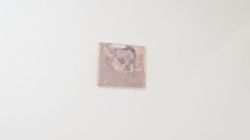
Sharon Poliakine / Judith Leyster and Lavinia Fontana
Sharon Poliakine
Born in Haifa, 1964
Lives and works in Ra'anana
These works by Sharon Poliakine center on two women artists who represent the history of female painters, which has been coming to light in recent decades. Lavinia Fontana and Judith Leyster were both successful artists during their lifetimes, yet were subsequently forgotten. They have recently received renewed recognition and appreciation thanks to feminist scholarship.
Judith Leyster
1609, Harlem, Holland
1660, Amsterdam, Holland
Judith Leyster was rediscovered in 1893, when her signature surfaced beneath that of Frans Hals signature on the painting The Happy Couple (1630). In retrospect, she was revealed to have been one of the best-known women painters during the golden age of Dutch painting, in the 17th century. Between the ages of 20 and 26 Leyster painted some 30 paintings, was a member of the artists' guild, and had three apprentices. She even sued the painter Frans Hals for luring away one of her students. In 1636, she married the painter Jan Miense Molenaer, and the couple moved to Amsterdam. Unlike Lavinia Fontana, Leyster stopped painting following her marriage, and over time most of her paintings were attributed to male artists of her generation, including her husband and Frans Hals. Today, only 12 paintings are attributed with certainty to Leyster.
Lavinia Fontana
1552, Bologna, Italy
1614, Rome, Italy
Lavinia Fontana was the daughter of a painter, and was taught by her father. As her story illustrates, the few women artists active in the early modern period were the daughters, sisters, or wives of male artists. She completed her first painting when she was 23, and painted portraits of aristocrats from Bologna, as well as religious and mythological scenes. She married when she was 25 and gave birth to 11 children, only three of whom survived. She continued to paint following her marriage, while her husband took care of the household and served as her assistant. In 1603, Fontana and her family moved to Rome at the invitation of the pope, and her artistic career flourished. More than 100 paintings by Fontana are documented, yet only 32 paintings signed by her or ascertained to be hers are known today. Twenty additional works are attributed to her.